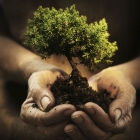-
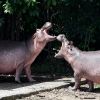 +4 +1
+4 +1Colombia wants to deport 70 cocaine hippos who won’t stop breeding
Colombia's proposed plan would send at least 70 hippos that live near drug lord Pablo Escobar's former ranch to India and Mexico.
-
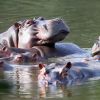 +4 +1
+4 +1How Colombia plans to handle Pablo Escobar's ranch runaway hippo problem
The hippos, descendants of four imported from Africa illegally by the late drug lord in the 1980s, have spread far beyond the Hacienda Napoles ranch and are a biodiversity problem.
-
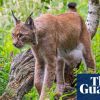 +15 +3
+15 +3Lynx facing extinction in France as population drops at most to 150 cats
Urgent action needed as DNA tests show their genetic diversity is so low they could vanish from the country in 30 years
-
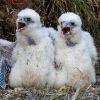 +15 +4
+15 +4The Endangered Species Act Turns 50: Assessing Successes & Failures
Thanks to the ESA, at least 227 species have been saved from extinction and 110 species have seen a tremendous recovery including American alligators, bald eagles, peregrine falcons, and humpback whales.
-
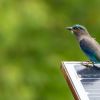 +12 +2
+12 +2Win-win: how solar farms can double as havens for our wildlife
Solar panels can provide places for animals to rest, shelter and breed – potentially benefitting both the land and farmers.
-
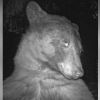 +24 +6
+24 +6Colorado wildlife camera accidentally captures hundreds of adorable 'bear selfies'
A wildlife camera in Boulder, Colorado, captured about 400 “bear selfies” after a curious black bear started investigating the camera. Boulder Open Space and Mountain Parks posted a few of the charming snaps on Twitter Monday.
-
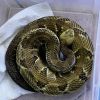 +20 +1
+20 +1Two Florida Reptile Dealers Sentenced to Prison for Conspiring and Trafficking in Protected Reptiles
Two Florida men were sentenced on charges of conspiracy and trafficking in protected timber rattlesnakes and endangered Eastern indigo snakes on Friday, Dec. 5. A federal judge in Philadelphia sentenced Robroy MacInnes, 55, of Inverness, Florida, and Robert Keszey, 48, of Bushnell, Florida, to 18 months and 12 months in prison respectively for their role in trafficking in state and federally protected reptiles.
-
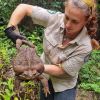 +4 +1
+4 +1Australian rangers find 'monster' 2.7 kg cane toad
Australian rangers have killed an invasive "monster" cane toad discovered in the wilds of a coastal park—a warty brown specimen as long as a human arm and weighing 2.7 kilograms (6 pounds). The toad was spotted after a snake slithering across a track forced wildlife workers to stop as they were driving in Queensland's Conway National Park, the state government said.
-
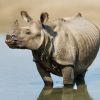 +16 +4
+16 +4A Conservation Success As Zero Indian Rhinos Were Poached In 2022 Making It The First Time In 45 Years
The announcement that zero rhinos have been poached in 2022 in the Indian state of Assam has been heralded as a global conservation success. IFAW and Wildlife Trust of India (WTI) congratulate the Assam government and local communities on this momentous achievement, which marks the first time there have been zero poaching incidents in the region in 45 years.
-
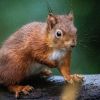 +14 +2
+14 +2Red squirrels number on the rise in Scotland, survey finds
A survey of red squirrels in Scotland suggests that efforts to increase their numbers have been successful. The Great Scottish Squirrel Survey found they were returning to the Aberdeen area and that the number of greys had decreased. Over many years, the reds retreated further northwards and concerns grew that they could be wiped out.
-
 +21 +4
+21 +4Only ONE of this Rare Lizard was Ever Found.....Is It Extinct 40 Years Later?
-
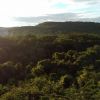 +13 +2
+13 +2Scientists say planet in midst of sixth mass extinction, Earth's wildlife running out of places to live
In what year will the human population grow too large for the Earth to sustain? The answer is about 1970, according to research by the World Wildlife Fund. In 1970, the planet's 3 and a half billion people were sustainable. But on this New Year's Day, the population is 8 billion. Today, wild plants and animals are running out of places to live. The scientists you're about to meet say the Earth is suffering a crisis of mass extinction on a scale unseen since the dinosaurs. We're going to show you a possible solution, but first, have a look at how humanity is already suffering from the vanishing wild.
-
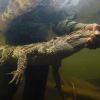 +24 +4
+24 +4They’re one of Earth’s rarest reptiles. But these crocodiles are bouncing back.
Siamese crocodiles were almost hunted to extinction. Now, efforts to reintroduce the species may be Cambodia’s most successful conservation story.
-
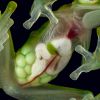 +19 +1
+19 +1Glass act: Scientists reveal secrets of frog transparency
WASHINGTON (AP) — Now you see them, now you don’t. Some frogs found in South and Central America have the rare ability to turn on and off their nearly transparent appearance, researchers report Thursday in the journal Science .
-
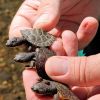 +15 +2
+15 +2Tiny, 'beautiful' endangered turtle hatchlings spotted in the wild for first time in four years
For the first time since surveying for the endangered Australian freshwater turtle species began in 2019, Manning River turtle hatchlings about the size of a 20-cent coin are spotted in the wild.
-
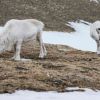 +20 +3
+20 +3Svalbard reindeer thrive as they shift diet towards ‘popsicle-like’ grasses
As the Arctic warms, concern for the plight of Santa’s favourite sleigh pullers is mounting. But in one small corner of the far flung north – Svalbard – Rudolph and his friends are thriving. Warmer temperatures are boosting plant growth and giving Svalbard reindeer more time to build up fat reserves; they also appear to be shifting their diets towards “popsicle-like” grasses that poke up through the ice and snow, data suggests.
-
 +21 +3
+21 +3Researchers discover secret of building a better wildlife overpass
A group of researchers at the University of British Columbia got to work locating, measuring and then evaluating a number of these overpasses to see how different dimensions impact how effective an overpass is at encouraging wildlife to cross.
-
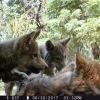 +15 +3
+15 +3‘A remarkable sign’: flurry of wolf births offers hope for California comeback
In a year of environmental ups and downs, a hopeful story of recovery is afoot in California. A grey wolf pack gave birth to eight pups this spring, it was recently confirmed, offering signs of a remarkable comeback after wolves were wiped out in the state more than a century ago.
-
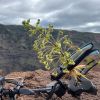 +16 +3
+16 +3How daredevil drones find nearly extinct plants hiding in cliffs
Ben Nyberg stood on a knife-edge ridge along Hawaii’s Na Pali Coast, his eyes scouring the leafy recesses of the neighboring red-rock ridges. It was quiet, if not for a faint buzzing of a drone flying among flocks of curious white-tailed tropicbirds.
-
 +3 +1
+3 +1Calling Animals "Pests" Is More About Us Than Them
Our relationships with nonhuman animals (animals) are complex, challenging, and paradoxical. We allow dogs and cats to breed themselves to death and continue to harm and kill other animals and destroy their homes at unprecedented rates as we take over and destroy the natural world.
Submit a link
Start a discussion
















